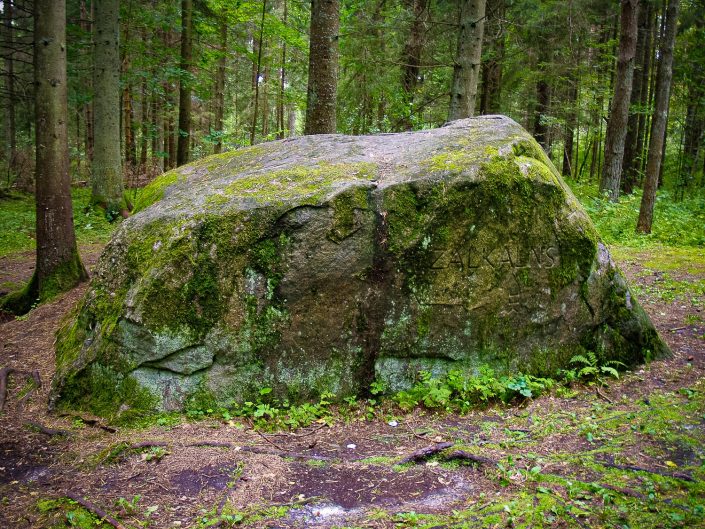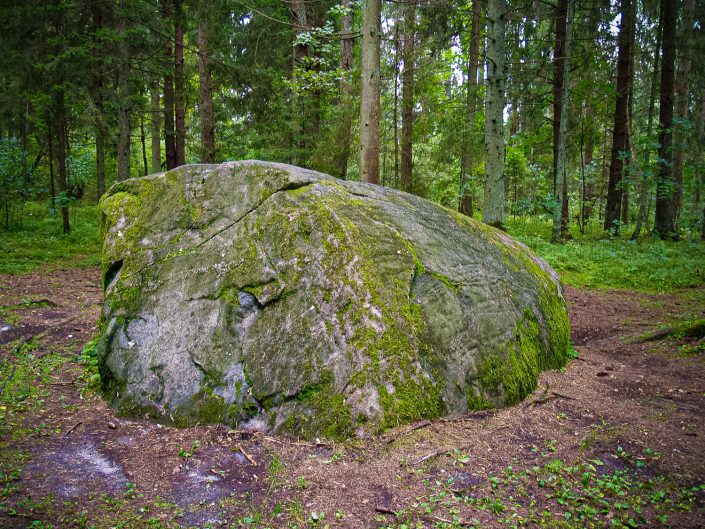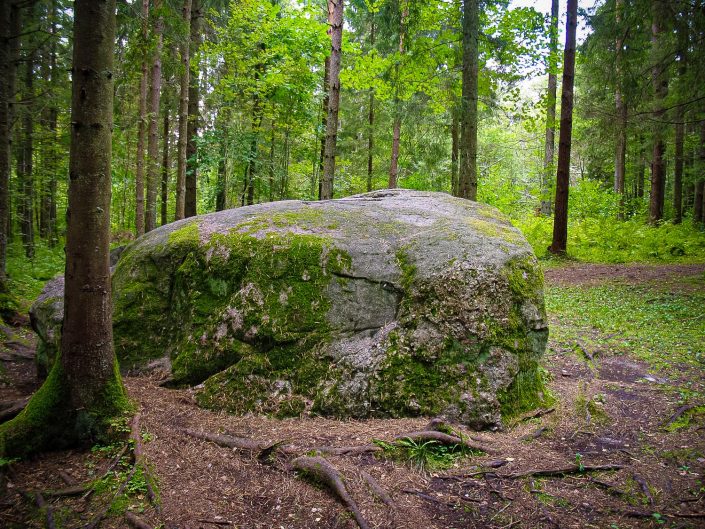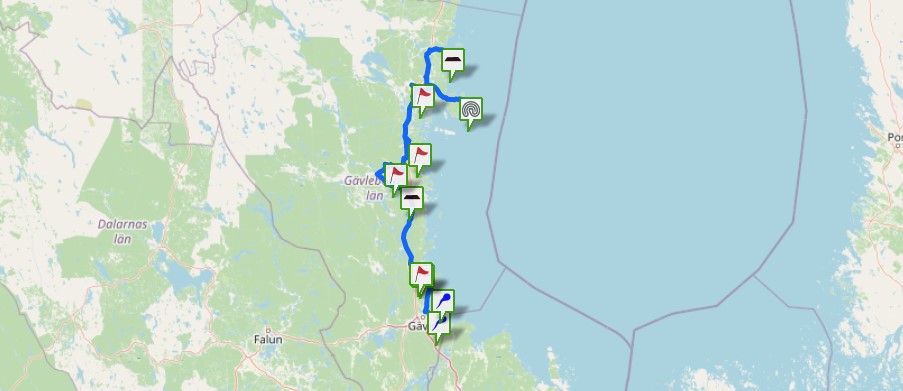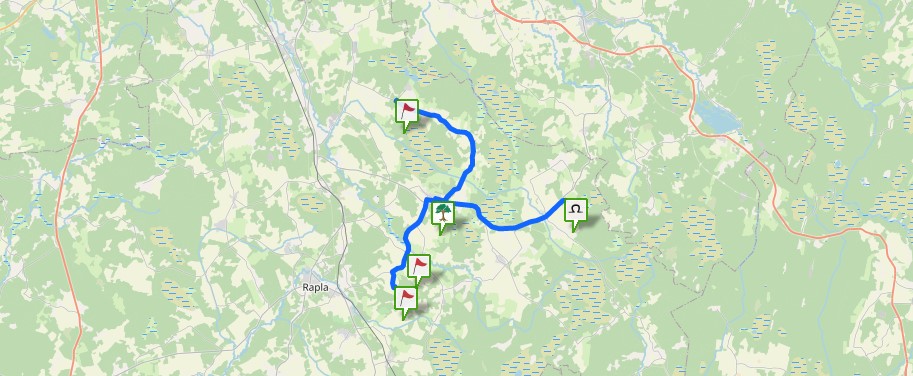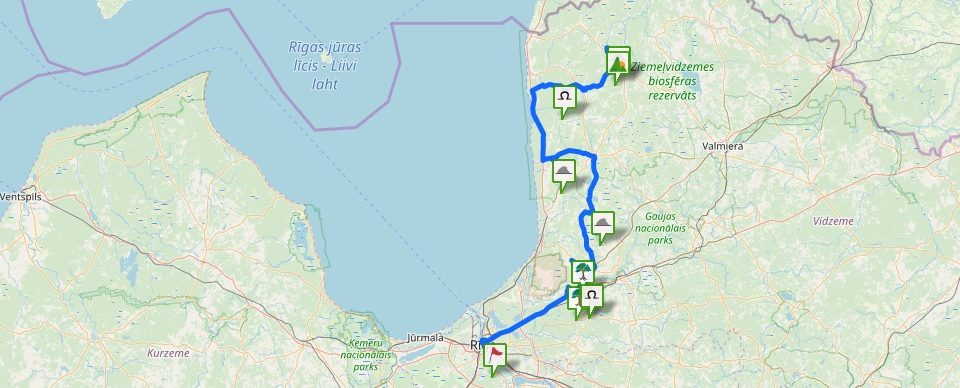On the even surface of Černauski Stone (length – 5.2 m, width – 4.6 m, height – up to 1.7 m) that had been burnt during earlier times there is an irregular and little expressed cavity (about 1 x 0.5 m). The stone is situated in an even place. Earlier the stone was surrounded by a clearing with undergrowth, before World War II – slanting pasture, now the stone lies in an underbrush therefore the stone is well visible and rather visually attractive. It might have been mentioned in records as early as in the 18th century. On 24 January, 1739 when inspectors questioned the priest and churchwarden of Allaži parish also the following question was asked: “Are there the sites where at certain times sacrifices have been made?” The priest answered negatively, the churchwarden, however, reported differently: in Allaži there is a place where three stones have been put on top of each other and there is another place where there is a big stone. The peasants “coming from the lands”were said to bring sacrifices there. According to him the local people did not do that. The inspectors’ recommendation for further actions was as follows: the previously mentioned stones have to be crushed, the land surrounding them had to be dug and if any other similar sites became known – the abusers of the church law had to be punished. It is not known how the order was implemented. Assumingly, it was easy to push down and crash “the three stones placed each above the other”, however the destruction of “the big stone” was rather complicated. It cannot be surely stated that Černauski Stone is “the big stone” mentioned in 1739, however, some of the features could refer to it (After: Urtāns, 1985). The earth around the stone is trodden down; nothing grows here. At the stone there are candles which might suggest some modern rituals.
Černauski Stone can be easily accessed by car if the direction signs are followed. In the signs a better sounding name “Ezernieku akmens” is used for the stone. Thus if Černauski Stone is searched such a change of names could be misleading. The sign about “Ezernieku akmens” is also placed at the end of the Inčukalns road as well as on the road-side where a trodden path sets out to the stone. At the stone there is an information sign with a larger text. In the stone the name “Zaļkalns” (the Green Hill) has been carved which has no connection with the possible sacral significance of the stone.
